What Meaning Does the Crescent Moon Symbol Hold Across Cultures?
The crescent moon symbol, originating in ancient Mesopotamia, represents the moon god Sin, embodying time and renewal. It later permeated Egyptian and Greek cultures, symbolizing celestial phenomena's impact on daily life.
In Islam, it denotes divine guidance, while in Hinduism, it is linked to Lord Shiva. Additionally, it symbolizes femininity, fertility, and protection in Greek and Roman traditions.
Modern interpretations view it as a symbol of cycles, change, and personal growth, often seen in fashion and art. The symbol's enduring relevance across different eras and cultures reveals its profound and multifaceted significance.
Discover more about its varied meanings.

Key Takeaways
- The crescent moon symbolizes time, renewal, and celestial influence, originating from ancient Mesopotamian culture.
- In Islamic iconography, it represents divine guidance and marks the start of lunar months.
- Reflects femininity, fertility, and protection in Greek and Roman traditions.
- Modern interpretations link it to cycles, change, personal growth, and resilience.
- Prominent in art, fashion, and new-age spiritual practices, representing cultural identity and artistic expression.
Historical Origins
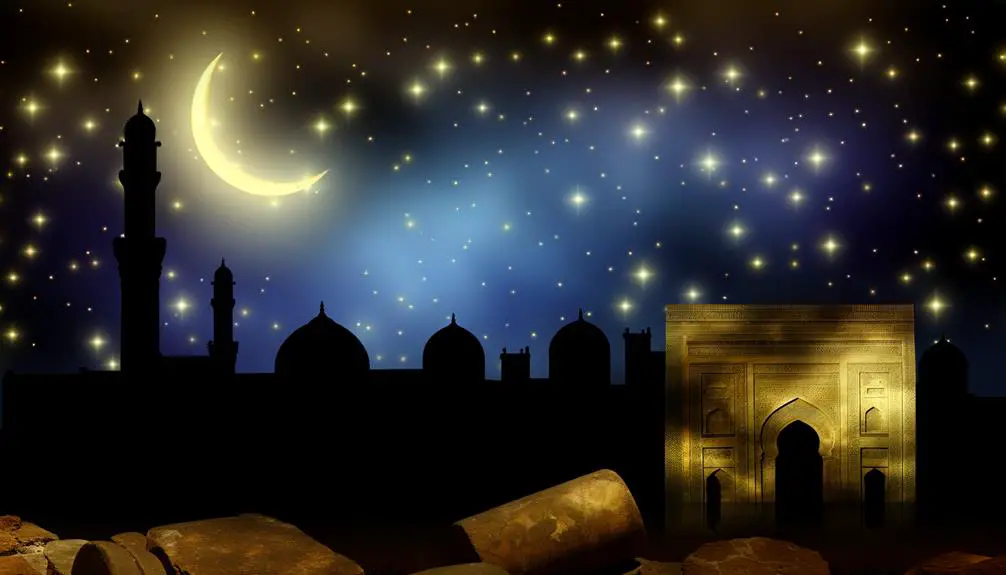
The crescent moon symbol, with its historical origins tracing back to ancient Mesopotamia, has held significant cultural and religious importance across various civilizations for millennia.
In Mesopotamian culture, the crescent moon was closely associated with the moon god Sin (or Nanna), who was believed to control time and the calendar. This lunar deity's symbolism permeated various aspects of life, influencing everything from agricultural cycles to navigation.
The crescent moon subsequently appeared in iconography and religious practices in ancient Egypt and Greece, often linked to deities such as Thoth and Artemis. Its enduring presence in art and architecture highlights its foundational role in humanity's early attempts to understand celestial phenomena and imbue them with spiritual significance.
Cultural Significance

The crescent moon symbol has traversed various cultures, evolving from its ancient roots in early lunar worship to becoming a potent emblem in numerous religious traditions worldwide. Its integration into Islamic iconography exemplifies its profound spiritual resonance, while modern interpretations often emphasize its aesthetic and metaphysical qualities.
Examining these dimensions reveals the symbol's enduring legacy and multifaceted significance across time and societies.
Ancient Symbolism Origins
Tracing back to ancient civilizations, the crescent moon symbol holds profound cultural significance, often embodying themes of fertility, growth, and divine protection.
In Mesopotamian culture, the crescent moon was associated with the moon god Sin, symbolizing time and renewal.
Similarly, in ancient Egypt, the crescent moon was linked to Isis, the goddess of motherhood and magic, reflecting its role in life cycles and feminine power.
The Greeks and Romans adopted this symbolism, where the crescent moon was connected to Artemis and Diana, goddesses of the hunt and wilderness, emphasizing protection and natural cycles.
This enduring symbol reflects humanity's reverence for the moon's influence on agriculture, tides, and timekeeping, revealing its integral role in shaping early cultural and spiritual practices.
Religious Associations Worldwide
Building on its ancient symbolism, the crescent moon has become a prominent emblem in various religious practices across the globe, representing different spiritual and cultural significances.
In Islam, the crescent moon, often accompanied by a star, is a universally recognized symbol, representing divine guidance and the lunar calendar that governs Islamic rituals.
In Hinduism, the crescent moon is associated with Lord Shiva, signifying time's cyclical nature and spiritual transcendence.
Similarly, in ancient Greek and Roman traditions, the crescent moon was linked to lunar deities like Artemis and Diana, embodying femininity, fertility, and protection.
This rich tapestry of religious associations underscores the crescent moon's enduring power as a symbol of spiritual and cultural resonance throughout history and across diverse faiths.
Modern Interpretations Today
In contemporary society, the crescent moon symbol has evolved beyond its religious origins to become an emblem of cultural identity, artistic expression, and personal meaning. It is frequently adopted in fashion, jewelry, and art, symbolizing femininity, mystery, and transformation.
The crescent moon's association with cycles and change resonates in modern contexts, reflecting personal growth and self-discovery. Additionally, it serves as a marker of cultural heritage, particularly in regions like the Middle East, where it remains a potent national and ethnic symbol.
Social movements and individual identities also leverage the crescent moon to signify resilience and renewal. Therefore, its modern interpretations are multifaceted, reflecting a blend of historical reverence and contemporary relevance.
Symbolism in Religion
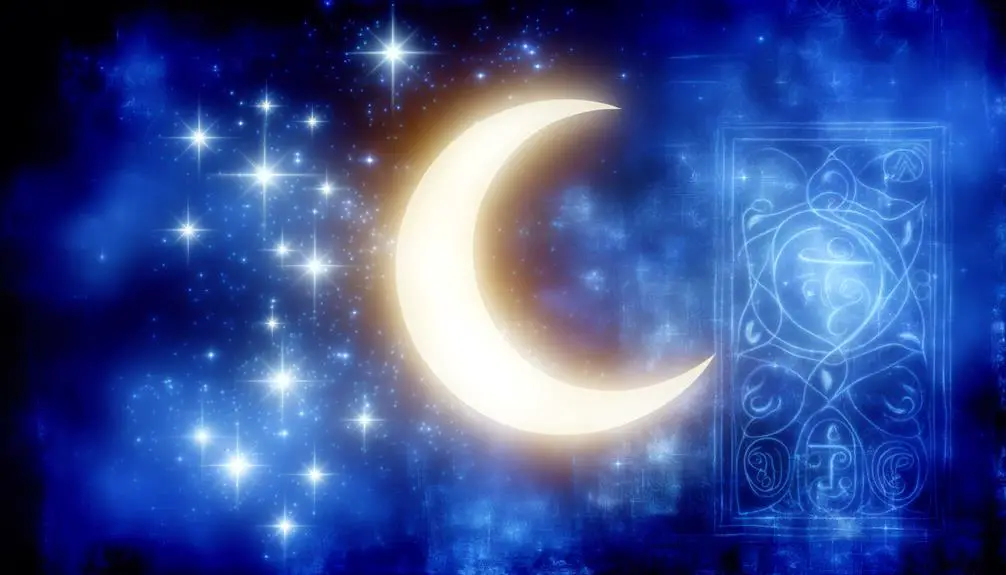
The crescent moon, often intertwined with religious iconography, holds profound significance within various faiths, especially in Islam where it symbolizes guidance and divine sovereignty.
Historically, the crescent, or Hilal, has been associated with the Islamic calendar, marking the beginning of months and important religious observances such as Ramadan.
Beyond Islam, the symbol appears in Hinduism and Buddhism, often representing cyclical time and the universe's eternal nature.
In Christianity, particularly in Marian iconography, the crescent moon under the feet of the Virgin Mary signifies her glory and purity.
This multi-faceted symbol, as a result, transcends a single religious narrative, embodying themes of renewal, protection, and celestial influence across diverse spiritual landscapes.
Its enduring presence underscores its deep-rooted and universal appeal.
Astrological Meaning
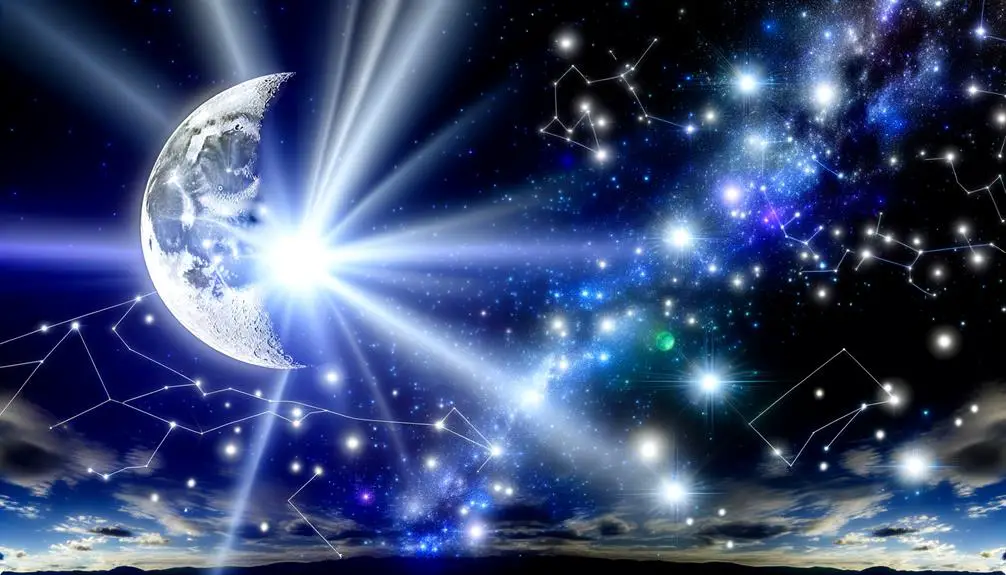
In astrology, the crescent moon symbol is revered for its profound emotional and spiritual influence, reflecting the cyclical nature of human experiences.
Historically, the lunar phases have been interpreted as markers of growth, introspection, and renewal, each phase offering unique insights into personal development.
The waxing crescent, in particular, is often associated with new beginnings and the setting of intentions, while the waning crescent symbolizes release and closure.
Emotional and Spiritual Influence
How does the crescent moon symbol, deeply embedded in astrological traditions, influence one's emotional and spiritual life through its alignment with celestial phases? Historically, the crescent moon has been associated with new beginnings and intuition. Astrologically, it symbolizes the waxing phase, a period of growth and emotional enrichment. This alignment impacts personal development, fostering a sense of renewal and heightened awareness. The following table illustrates the emotional and spiritual influences of the crescent moon:
| Phase | Influence |
|---|---|
| Waxing Crescent | Growth and Renewal |
| Waning Crescent | Reflection and Letting Go |
| New Moon | New Beginnings |
| Crescent in Zodiac | Emotional Intuition |
Understanding these influences allows individuals to harness the crescent moon's energy for personal and spiritual growth.
Lunar Phases Significance
Lunar phases, deeply rooted in astrological traditions, reveal a rich tapestry of meanings that guide emotional and spiritual experiences.
Historically, the lunar cycle has been a celestial clock, influencing human behavior and cultural rituals. The New Moon signifies new beginnings and planting seeds of intention, while the Waxing Crescent symbolizes growth and progress. The First Quarter denotes challenges and decisions, urging resilience. The Waxing Gibbous represents refinement and preparation for fruition.
The Full Moon, often linked with heightened emotions and culmination, serves as a time for reflection and celebration. Waning phases — including the Waning Gibbous, Last Quarter, and Waning Crescent — symbolize release, letting go, and introspection, completing the cycle.
Each phase intricately mirrors life's rhythms and transformations.
Mythological Connections
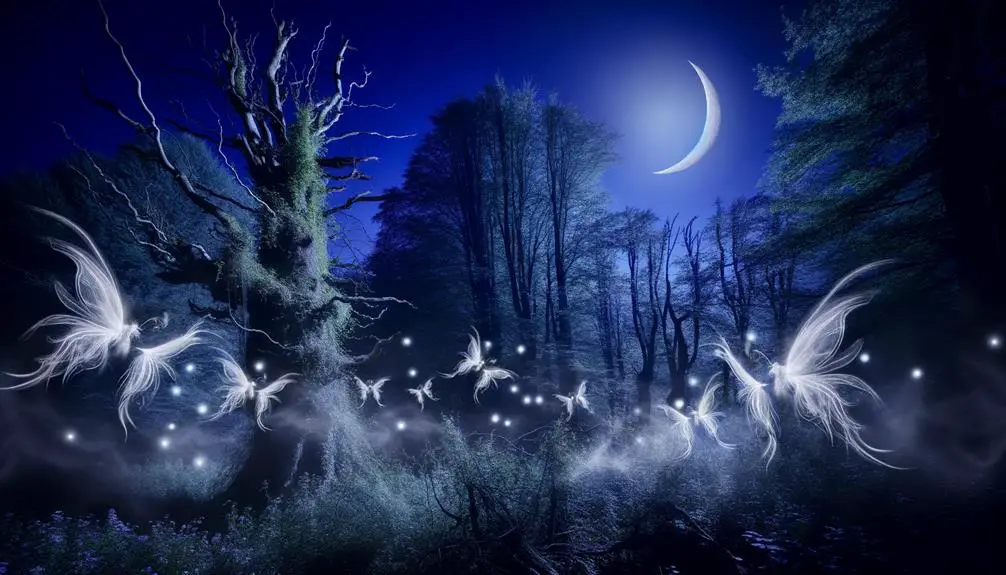
Throughout various mythologies, the crescent moon symbol has been intimately linked to a multitude of deities and cosmic narratives, reflecting its profound significance across different cultures and epochs. This celestial emblem has often been associated with goddesses representing fertility, femininity, and the cyclical nature of life.
- Greek Mythology: Associated with Artemis, the goddess of the hunt and the moon.
- Roman Mythology: Connected to Diana, the counterpart of Artemis.
- Hindu Mythology: Linked to Shiva, who wears a crescent moon on his head, symbolizing time and the cosmos.
- Egyptian Mythology: Tied to Thoth, the deity of wisdom and the moon.
- Islamic Tradition: The crescent moon, or Hilal, marks the beginning of the lunar months.
These connections highlight the moon's enduring influence in shaping spiritual and cultural frameworks.
Influence in Art
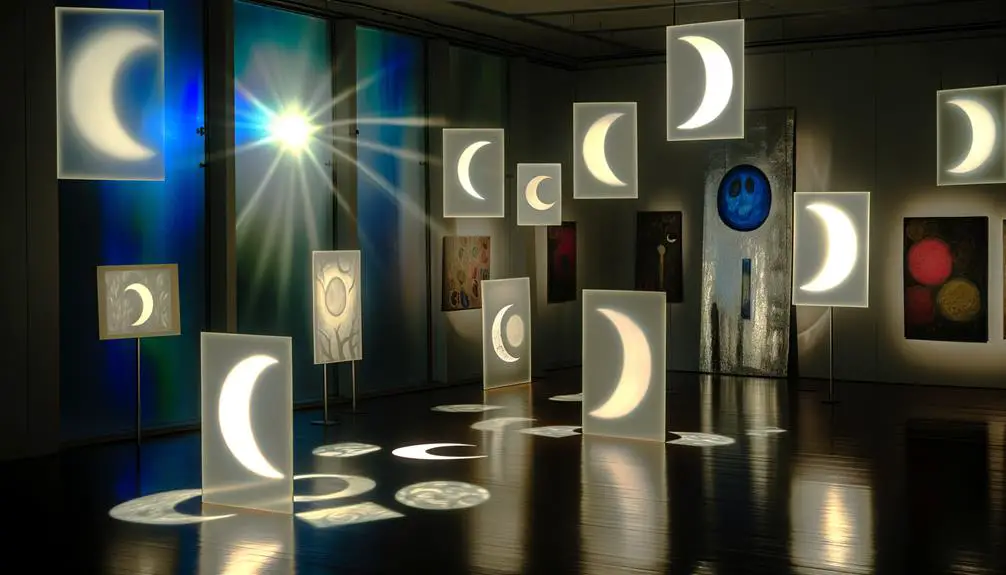
The profound mythological significance of the crescent moon has also profoundly influenced artistic expressions across various cultures and historical epochs, imbuing artworks with layers of symbolic meaning and cultural resonance. From ancient Mesopotamian artifacts to Renaissance paintings, the crescent moon has been employed to signify divinity, femininity, and the passage of time. This celestial symbol appears in diverse artistic mediums, including sculpture, painting, and textiles, reflecting its universal appeal and multifaceted significance.
| Culture | Art Form |
|---|---|
| Mesopotamian | Sculptures |
| Islamic | Architecture |
| Renaissance | Paintings |
| Indigenous | Textiles |
Each cultural context offers unique interpretations, demonstrating the crescent moon's enduring legacy in the human artistic endeavor.
Modern Interpretations
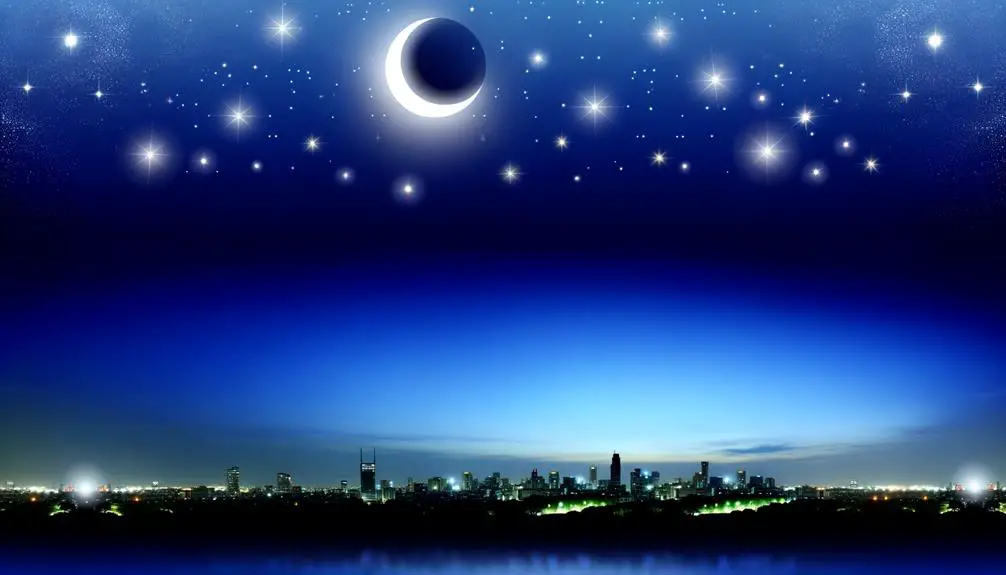
In contemporary culture, the crescent moon symbol continues to hold substantial significance, often embodying themes of growth, transformation, and the cyclical nature of life.
Its presence in popular media, from fashion and jewelry to literature and film, underscores its enduring allure and versatility as a symbol.
This modern resurgence invites an analysis of its evolving interpretations and the broader cultural messages it conveys today.
Cultural Significance Today
Embracing both historical roots and contemporary contexts, the crescent moon symbol today often represents a blend of cultural identity, spiritual beliefs, and aesthetic preferences.
This ancient symbol continues to hold diverse meanings across various modern societies. In fashion and art, it frequently appears as a motif representing femininity and mystery. For many, it embodies a connection to nature and the cyclical rhythms of life.
Meanwhile, some communities use it to express solidarity and cultural heritage, particularly within the Islamic world. Additionally, the crescent moon has found a place in new-age spiritual practices, symbolizing intuition and emotional well-being.
- Cultural identity: Strong ties to Islamic symbolism.
- Fashion: Popular motif in jewelry and design.
- Nature connection: Represents life's cycles.
- Spirituality: Symbol of intuition.
- Heritage: Emblem of cultural solidarity.
Popular Media Usage
Frequently appearing in popular media, the crescent moon symbol now represents a fusion of ancient mystique and modern creativity, serving as a versatile emblem in various forms of visual storytelling and branding.
In contemporary cinema and literature, it often signifies themes of transformation, mystery, and the supernatural, drawing from its historical associations with deities and night-time rituals.
Fashion and beauty industries utilize the crescent moon to evoke a sense of ethereal elegance and timelessness. Additionally, digital platforms and social media influencers adopt the symbol to convey a brand identity rooted in spirituality and introspection.
This modern reinterpretation maintains the crescent moon's enigmatic allure while adapting its significance to resonate with current cultural and aesthetic sensibilities.
Crescent Moon in Fashion
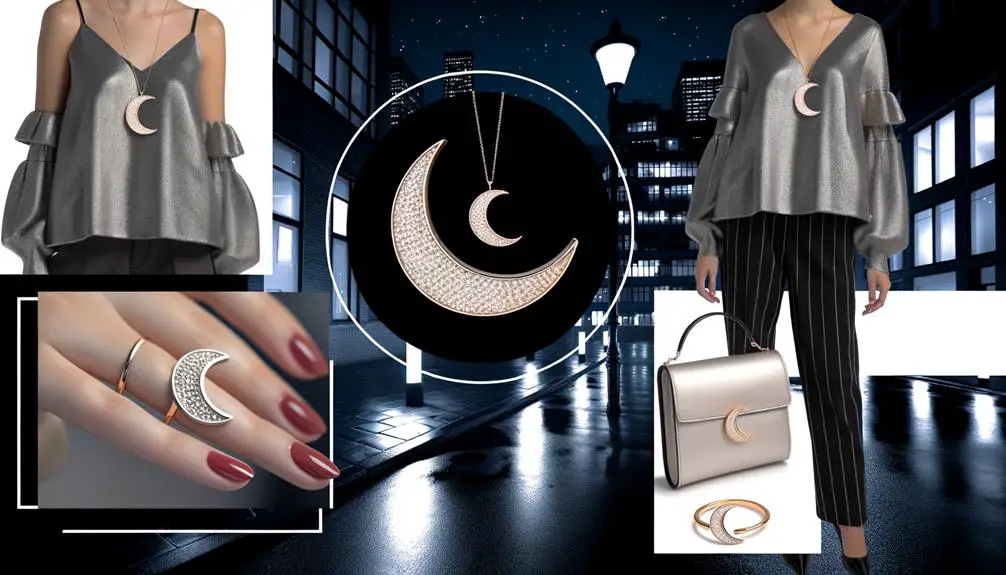
Throughout the annals of fashion history, the crescent moon symbol has emerged as a powerful motif, embodying both mystical allure and cultural significance in various sartorial designs. This emblem has been woven into the fabric of haute couture, streetwear, and accessories, often symbolizing femininity, transformation, and the cosmic cycle.
Designers have deftly incorporated the crescent moon in their collections, weaving it into textiles, jewelry, and even footwear to evoke a sense of ethereal elegance and celestial mystery.
- Haute Couture: Adorned gowns and dresses with crescent moon embroideries.
- Streetwear: Graphic tees and hoodies featuring crescent moon prints.
- Accessories: Jewelry collections with crescent moon pendants and earrings.
- Footwear: Moon-themed boots and sandals.
- Cultural Revival: Incorporating traditional motifs into modern designs.
Representation in Literature

The crescent moon symbol, while a prominent motif in fashion, also holds significant literary resonance, often representing themes of mystery, transformation, and the passage of time in various literary works.
In classical literature, it frequently symbolizes the cyclical nature of life, as seen in Shakespeare's plays where it underscores the transient and ephemeral aspects of existence.
Romantic poets like Shelley and Keats imbued the crescent moon with notions of melancholic beauty and introspection.
In modern literature, authors like Haruki Murakami use it to evoke surrealism and the subconscious.
The crescent moon thereby serves as a potent literary device, enabling writers to explore complex human emotions and the inexorable flow of time, weaving it into the fabric of their narratives.
Psychological Impact
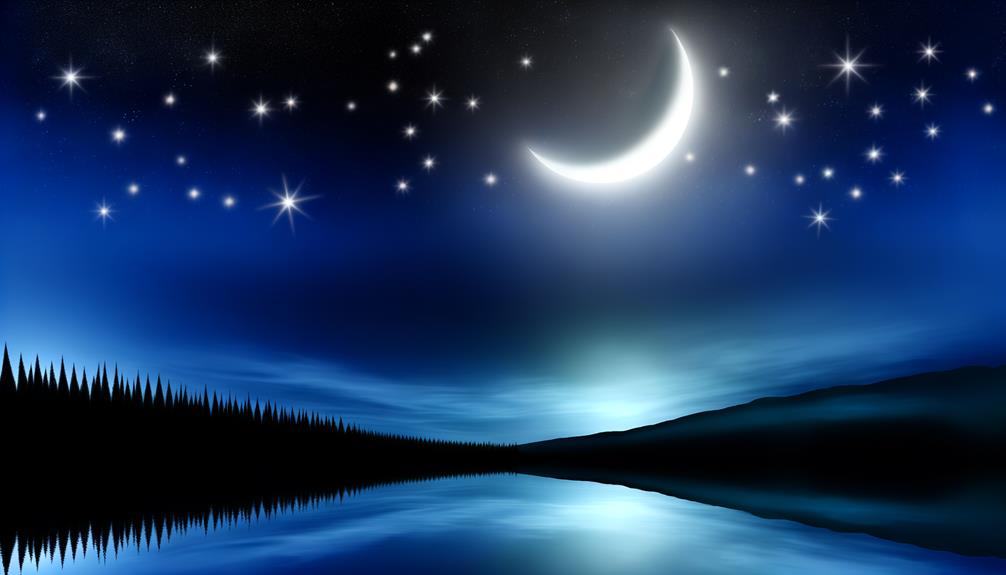
Numerous psychological studies suggest that the crescent moon symbol can evoke a range of emotional responses. This includes feelings of calm and tranquility, as well as fostering introspection and a sense of mystery. These responses are rooted in its historical association with night and the subconscious mind. The symbol's connection to the lunar cycle and darkness may activate deeper layers of the psyche, encouraging self-reflection and a contemplative state.
Its recurring presence in art and literature underscores its impact on emotional well-being and mental states. Overall, the crescent moon symbol is noted for evoking calmness and tranquility, promoting introspection and deep thought, suggesting mystery and the unknown, and being historically linked to the subconscious mind.
Conclusion
The crescent moon, a symbol steeped in history, holds complex cultural, religious, and astrological significance.
Across various contexts, its symbolic essence evolves, embodying transformation, femininity, and mystique.
From ancient mythologies to modern fashion, literature, and psychology, the crescent moon's enchanting curvature continues to inspire.
This enduring emblem intertwines historical heritage with contemporary creativity, illustrating its profound and perpetual presence in human consciousness.
Studying the crescent moon reveals rich, resonant layers of meaning and memory.






